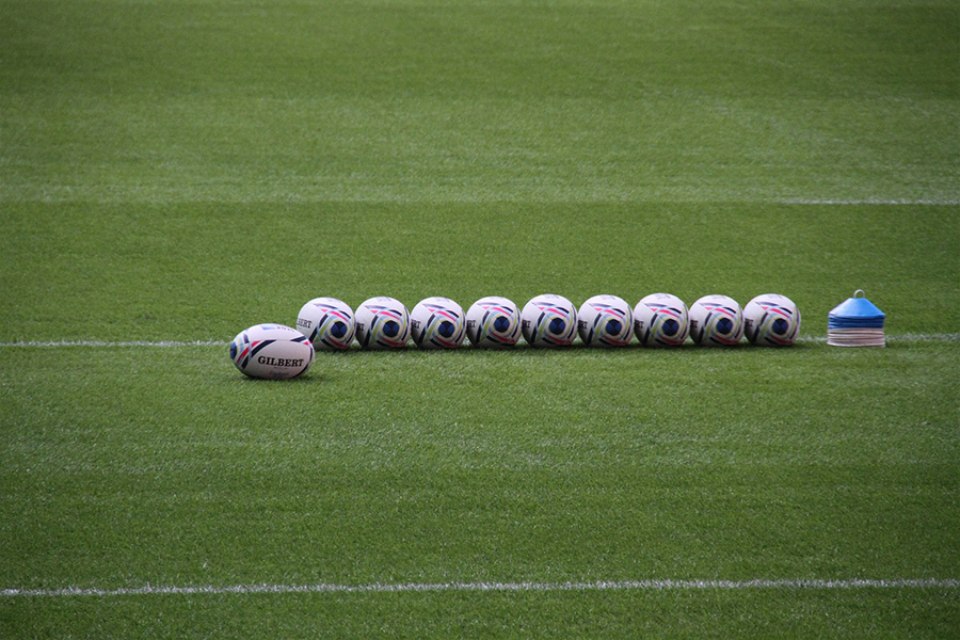Rugby-Irish talent factory primed for sustained success
While the Irish union's drive to keep their best players at one of the four home provinces began to change fortunes in the 2000s, the now critical sub-academy bridge between rugby-focussed private schools producing the likes of Brian O'Driscoll and national academy did not exist until 2007. It was the brainchild of Dave Fagan, who after a decade as Leinster senior team's strength and conditioning coach told his superiors that the young players coming through were not good enough physically and a proper structure was required.

As Ireland look to wrap up a second Six Nations title in a row on Saturday, a further sign of the potential sustained success to come will be on display the night before when the country's next generation aim to go one better.
The under-20 team's bid for a third successive Six Nations in a race that is going down to the wire is part of an unbeaten run in the competition that stretches back almost three years and includes two Grand Slams. In a country of 5.3 million people where rugby is the fourth most popular sport, the conveyer belt of talent is testament to a joined up and finely tuned system from schools to the national team that Scotland coach Gregor Townsend predicted could see Ireland dominate world rugby for the next 5-10 years.
"What those lads have done is just phenomenal," former Ireland international Trevor Hogan said of the under-20 team, many of whom have trained under him as head of Leinster's sub-academy programme. "It's also recognition at how well the schools and club pathway have been preparing lads. While you constantly want to innovate and bring in new ideas, it reinforces that we don't need to stray too much from this model."
That development model began in very different circumstances in the 1990s, the decade rugby turned professional and Ireland's best achievement in the then Five Nations was a solitary third place finish. While the Irish union's drive to keep their best players at one of the four home provinces began to change fortunes in the 2000s, the now critical sub-academy bridge between rugby-focussed private schools producing the likes of Brian O'Driscoll and national academy did not exist until 2007.
It was the brainchild of Dave Fagan, who after a decade as Leinster senior team's strength and conditioning coach told his superiors that the young players coming through were not good enough physically and a proper structure was required. "We were getting players at (age) 22, 23 who were not developed," said Fagan, who was given a green light to set up the first provincial sub academy but not a whole lot more.
"We had nothing in terms of budget, we had no physios, no coaches. It was just kind of myself really." Fagan's first intake, which included prop Cian Healy, who last weekend became Ireland's second most capped player, lifted weights in a damp storage room under the stand at Dublin's Donnybrook stadium and practiced on one of the back pitches.
Twelve years and four senior European Cups later, Leinster turned Fagan's makeshift weightsroom into a 1.5 million euro ($1.64 million) centre of excellence, where the 25 best 18 and 19-year-old prospects get a taste of the professional life each morning from 7am before attending university classes. Some 160 have gone on to sign professional contracts since 2007, Fagan said. In the now state of the art gym, a large poster with the words "Home Grown Talent" and around 50 current Leinster players from 2009 graduate Rhys Ruddock to recent 20-year-old debutant Fintan Gunne stares down at the new crop.
Similar structures have been rolled out in Ireland's three other provinces. SOPHISTICATED SCHOOLS SYSTEM
In tandem with the improvements at academy level, Ireland's much vaunted schools system - where top games are televised and provincial finals can attract crowds of up to 10,000 - has also become much more sophisticated. While it was still common for teachers to train teams in O'Driscoll's schooldays, the most competitive schools now have dedicated head coaches, strength and conditioning teams, video analysis and guidance on student nutrition.
The result is a style of rugby not dissimilar to the high tempo attacking blueprint of Andy Farrell's senior Irish team. "The biggest change is the average rugby player is very good. That's honestly the difference," said Declan Fassbender, who led Dublin's Gonzaga College to their first ever Leinster Schools senior cup title last year and is also head coach of All Ireland League club side Lansdowne.
"I think that the general skills and general coaching facility within the schools has meant that the player of 20 or 30 years ago is a far better tactical player now and probably a little bit faster and a little bit stronger." Fagan said it is no accident that Irish players are making their full provincial debut and ready for test rugby at a much younger age. One of Ireland' stars of the Six Nations, lock Joe McCarthy, was a member of Leinster's academy two seasons ago.
"To be a professional rugby player I would say is in a lot of kids' thoughts who have ability as opposed to maybe having an auld dream about 10 years, 15 years ago," said Fassbender. ($1 = 0.9145 euros)
(This story has not been edited by Devdiscourse staff and is auto-generated from a syndicated feed.)










